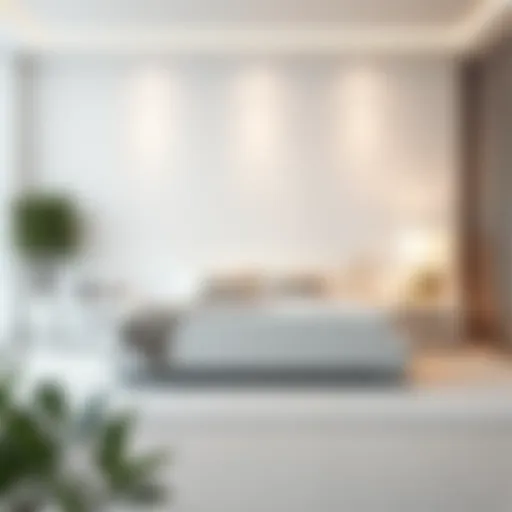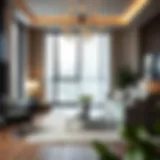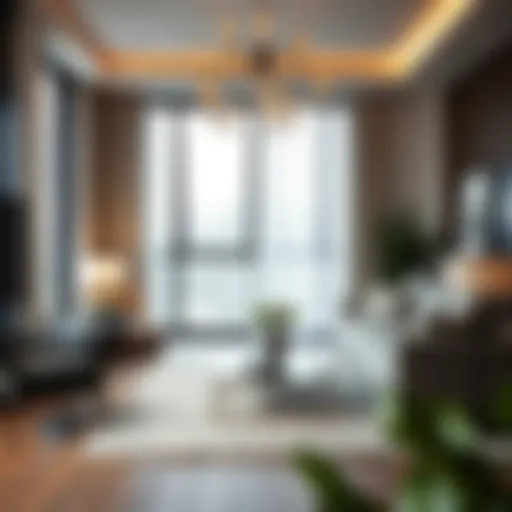Design Reach-in Closets Online: A Complete Guide
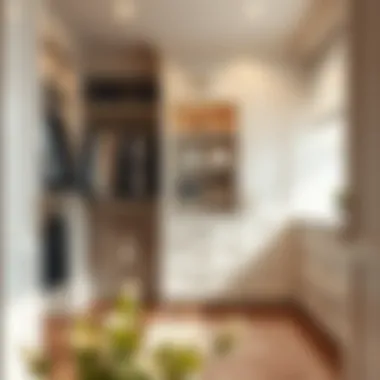
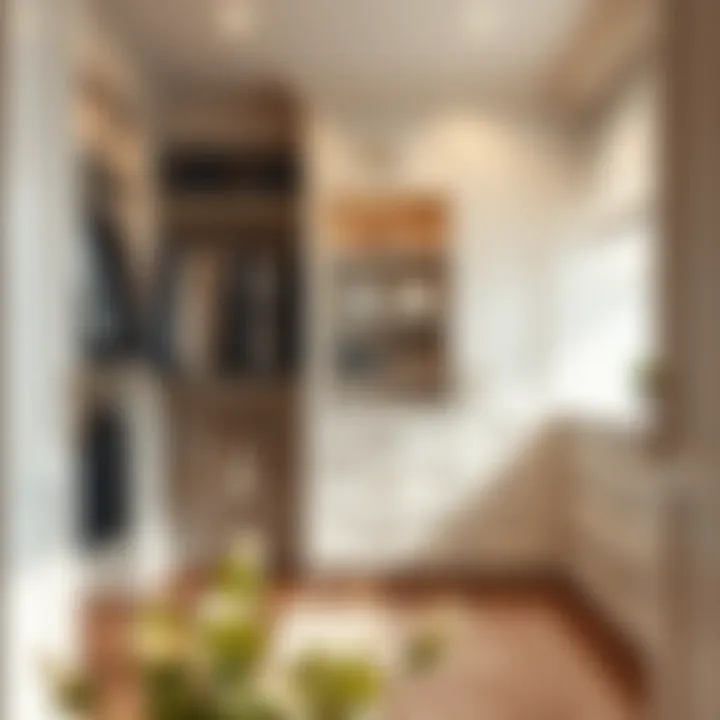
Intro
Designing a reach-in closet online is not just a trend; it's a necessity in today's world where space is often a luxury. Many homeowners and DIY enthusiasts are eager to maximize every inch available whilst achieving a stylish appearance. The rise of online resources has empowered individuals with tools and inspiration that were previously only available to professional designers. In this guide, we'll explore every facet of crafting a reach-in closet that is both functional and aesthetically pleasing.
Furniture Design Trends
Current Styles and Aesthetics
When it comes to designing a reach-in closet, the style you choose can significantly impact how both the space and your items are perceived. Current trends lean towards a blend of functionality and simplicity, with designs that emphasize clean lines and open spaces. Minimalism has found its place here, with favorite styles including Scandinavian, industrial, and modern farmhouse.
For example, the Scandinavian look often employs light woods and a palette that promotes bright, airy atmospheres. This can make even the smallest of reach-in closets feel more open. On the other hand, industrial designs often use a mix of metal and wood, creating a bold statement piece that stands out.
Color Palettes and Materials
Selecting the right colors and materials is crucial. Neutral tones like whites, grays, and beiges can make a space feel serene and spacious. You might also consider the sleek look of darker shades paired with metallic accents.
As for materials, the choice often hinges on personal taste and practicality. Here are some popular options:
- Mediapan: Affordable and available in various finishes.
- Solid Wood: Offers durability but comes at a higher price point.
- Plywood: A sturdy alternative that can be customized easily.
- Wire Racks: Ideal for visibility and accessibility.
Buying Guides
Essential Considerations When Purchasing
Before diving into the buying process, it’s important to think about a few key factors. Begin by measuring the space to determine the dimensions you have to work with. You should also consider:
- Storage Needs: Personal items vary widely—what do you need to store most?
- Style Coordination: Ensure the closet complements the rest of your home decor.
- Budget Constraints: Set a realistic figure and stick to it. It's tempting to overspend when you see all the options!
Top Recommendations for Different Budgets
Designing your reach-in closet doesn't have to break the bank. Below are some recommendations tailored for various budgets:
- Low Budget: IKEA offers modular closet solutions that can be personalized.
- Mid-Range: The Container Store has a variety of customizable options that balance quality and cost.
- High-End: California Closets offers premium materials and personalized design experiences for a splurge.
“The right reach-in closet can transform your daily routine and elevate your space, no matter your budget.”
By understanding current trends and knowing what to consider while buying, you can make informed decisions that lead to a successful closet design. Join us as we explore further aspects in this guide, ranging from space optimization techniques to exploring emerging technologies in the design world.
Relevant Resources
For more information on design principles, consider these links:
This comprehensive guide will ensure you have all the tools you need to design and optimize your reach-in closet effectively.
Understanding Reach-In Closets
Understanding the concept of reach-in closets is vital for anyone looking to optimize their available space effectively. These closets, commonly found in homes, represent a hybrid between traditional closet designs and modern conveniences, allowing homeowners to create organized, accessible spaces without the need for massive square footage. With growing trends towards minimalism and multi-functional spaces, reach-in closets have gained popularity, providing practical yet stylish solutions for various storage needs.
Definition and Purpose
A reach-in closet is a compact closet design that typically features a single or double door, allowing easy access to clothing, shoes, and other belongings stored within. The key aspect of these closets lies in their accessibility; a person can quickly reach for shoes or shirts without having to navigate through layers of items. Primarily designed to accommodate everyday items, they come equipped with rods, shelves, and drawers to maximize storage efficiency.
The purpose of reach-in closets is twofold: they provide an efficient storage solution while also enhancing the aesthetic appeal of a room. By incorporating sleek designs and personalized organization, these closets can seamlessly blend into any bedroom style—from contemporary to classic. They serve not only as functional spaces but also as opportunities for creative expression in how one chooses to arrange and display their belongings.
Benefits of Reach-In Closets
The benefits of reach-in closets are manifold and cater to various lifestyles.
- Space Efficiency: They require less floor space than walk-in closets, making them ideal for smaller rooms or apartments.
- Cost-Effectiveness: Building or redesigning a reach-in closet usually incurs lower costs compared to larger designs, as less material and labor are required.
- Easy Access: With well-organized shelving and rods, items in reach-in closets are easily accessible, allowing for a smoother morning routine.
- Customizable Options: Homeowners can personalize their reach-in closets from color schemes to interior layouts, aligning them with personal tastes and needs.
- Increased Home Value: A well-designed closet can enhance the overall appeal of a property, potentially increasing its market value.
Overall, reach-in closets combine space savings with functionality, making them an attractive option for many homeowners. They cater to diverse needs while maintaining an elegant presence in living spaces, essentially transforming areas that might otherwise be underutilized.
Design Considerations
When designing a reach-in closet, there are key considerations that influence both function and style:
- Dimensions: Understanding the space available is crucial. Measure carefully to ensure that the closet fits well within the room without making it feel cramped.
- Storage Needs: Consider the types of items you plan to store—heavy winter jackets require different solutions than delicate dresses.
- Doors: Selecting the right kind of doors can greatly influence access. Bi-fold, sliding, or traditional hinged doors all have their pros and cons that can affect space usage and styling.
- Lighting: Adequate lighting can elevate the usability of a closet. Consider adding built-in lights or motion sensors for better visibility.
- Ventilation: Proper air circulation is important to prevent mustiness, especially in smaller spaces.
Understanding these elements will lead to a more functional design that meets the homeowner's needs while enhancing the overall look and feel of the space. A well-thought-out reach-in closet can certainly make a mountain out of a molehill, turning a mere wooden structure into a hub of organization and style.
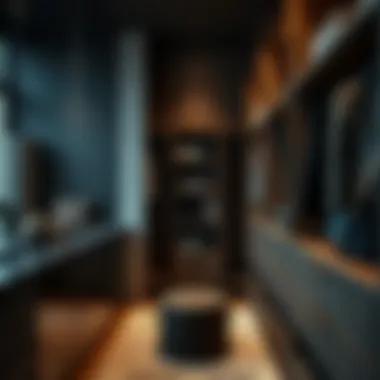
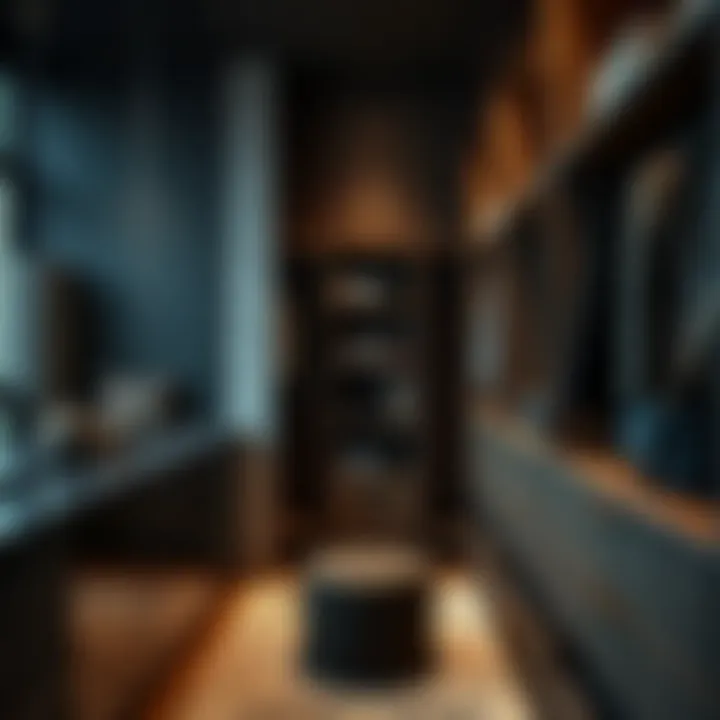
Design Elements to Consider
When you start the journey of designing a reach-in closet online, focusing on the right elements can make a world of difference. Every detail counts; from the way you manage the space to the aesthetic choices that give your closet personality. Understanding the interplay between functionality and style is key. Here are some essential design elements to keep in mind while planning your reach-in closet.
Space Utilization Strategies
Vertical Space Management
One of the most crucial aspects of designing a reach-in closet is vertical space management. Utilizing every inch of wall height not only gives you more storage, but it also can visually enlarge the space. The key characteristic of this strategy lies in its ability to take what could be wasted space and convert it into functional storage. Think about installing shelves and hooks all the way up to the ceiling, where you can store items you don’t use daily, like seasonal clothing or luggage.
A unique feature of vertical space management is that it’s adaptable. You can add or remove shelving as your storage needs change. However, there’s a slight downside — items stored out of reach might be forgotten or become difficult to access without a step stool. Striking the right balance between accessibility and space efficiency is vital.
Layered Storage Solutions
Layered storage solutions offer a versatile approach to organizing belongings within a reach-in closet. By creating tiers or layers, you can maximize the use of depth, allowing for different categories of items to be stored in a neat and intentional manner. This method can help in identifying items quickly, making daily routines far smoother.
The beauty of layered storage lies in its customization. You can design sliding shelves or overlapping bins that cater to your specific needs. However, it's unwise to overthink this; too many layers can complicate retrieval. Always prioritize clarity in the organizational scheme to avoid a chaotic mess hidden behind layers.
Accessibility Features
Accessibility features are all about ensuring that you can easily reach and use what you store. This encompasses anything from adjustable shelving to pull-out drawers, making it significantly easier for different family members to access their things. The main advantage here is that accessibility enhances user experience; things don’t just get shoved in and forgotten.
A common characteristic of accessibility features is their focus on ergonomics. Proper heights and carefully designed pull systems help in minimizing strain on your back or shoulders. A potential drawback is cost; incorporating such features can sometimes demand a bigger budget, but the investment often pays off in daily usability, creating a smoother experience overall.
Aesthetic Choices
Aesthetic choices play a pivotal role in defining the character of your reach-in closet. Your personal style, as well as the overall look of your home, should guide these selections to ensure cohesion and enjoyment in your space.
Color Schemes and Finishes
When you pick a color scheme and finishes for your closet, it’s more than just a visual treat; it sets the mood for your space. Light colors can make a small area feel roomy, while darker shades can bring an element of sophistication. The finish of the surfaces — whether matte, glossy, or textured — adds depth to the design.
One unique aspect to consider is the mix of colors and finishes for different elements. For example, pairing a sleek white finish with rustic wood accents can create a stunning contrast. However, this approach requires careful thought; if overdone, it could lead to a visual overload.
Door Styles
Door styles can dramatically affect the look and functionality of your reach-in closet. Choices range from bi-fold, sliding, to traditional swinging doors. The most notable factor is the impact of these styles on available space. Sliding doors, for instance, can save room when you open them, while swinging doors might restrict access in tight quarters.
A unique feature of choosing door styles is that they can act as a focal point. A bold color or striking design can add flair. But do keep in mind that stylish doors might demand more maintenance — keeping them clean or ensuring they function smoothly could require regular attention.
Lighting Solutions
Good lighting solutions are indispensable in a reach-in closet. Proper illumination not only assists in visibility but also sets the ambiance. Natural light is always a plus, but for those of us with closets tucked away, well-placed LED lights do wonders.
The main appeal of effective lighting is the ability to showcase your clothes and accessories beautifully, almost like a mini boutique. An innovative approach is to install lighting inside the closet, triggered by motion sensors when you open the door. However, this requires some wiring and initial setup, which can be a sticking point for DIY enthusiasts.
In summary, focusing on these design elements can greatly enhance both the functionality and appearance of your reach-in closet, making it a worthwhile endeavor for any homeowner or designer.
Online Resources for Designing Reach-In Closets
In this age of technology, the way we approach design has a lot to do with the resources available online. When it comes to designing reach-in closets, the importance of utilizing online resources cannot be overstated. Homeowners, designers, and DIY enthusiasts alike stand to benefit immensely from these tools and platforms. These unique resources allow individuals to stream-line the process, ensuring that every square inch is put to use efficiently and effectively.
Whether you’re looking to redesign an entire space or just make minor adjustments, the right online resources can provide invaluable insights on everything from visualizing the layout to selecting the appropriate materials. In the following sections, we'll delve into specific online tools, catalogs, and consultations that can help breath life into your closet project.
Design Software and Tools
Navigating the world of closet design begins with selecting the right software. Numerous design applications are developed specifically for creating closet layouts. Applications like SketchUp or SmartDraw allow users to create 3D models that can bring their vision to life. With these tools, one can see what their reach-in closet might look like without having to lift a hammer or a nail. A user-friendly interface simplifies the designing process, enabling even those with minimal experience to simulate various layouts and styles.
- Visual Representation: Design software helps in visualizing how the closet will look and function. This means less guesswork and clearer decision-making.
- Customization Options: Users can explore different configurations, materials, and finishes at the tap of a button, which can streamline the selection process.
- Cost Estimation: Certain tools provide a breakdown of costs associated with your design choices, assisting in budget management.
Online Catalogs and Stores
Online catalogs and stores are another vital resource in the journey of designing reach-in closets. Having a digital catalog can turn an overwhelming selection process into a more manageable experience, offering a plethora of options at your fingertips. Websites like Wayfair or IKEA offer customizable closet components that cater to virtually every style and budget.
- Wide Variety: The extensive range found online means that you can find products not typically available in physical stores. From unique shelving to specialty storage solutions, options abound.
- User Reviews: Many online stores allow customers to leave reviews and showcase photos, which can help guide potential buyers in making informed decisions.
- Convenience: The ability to compare prices and products swiftly can save time and ensure you’re getting the best possible deal.
Virtual Design Consultations
With advancements in technology, virtual design consultations have emerged as a groundbreaking way to receive professional input from the comfort of your home. Platforms like Houzz provide homeowners with access to a network of professional designers who can assist with the planning process. In these consultations, you’ll find tailored advice specific to your needs.
- Personalized Guidance: A professional designer offers insights and recommendations to fine-tune your ideas. Whether it’s about efficient storage solutions or aesthetics, they provide a fresh perspective.
- Live Interaction: Speaking directly with a designer allows for back-and-forth discussion, enabling quick clarifications or adjustments to the design.
- Flexibility: Virtual consultations often allow scheduling outside traditional office hours, offering the convenience busy homeowners require.
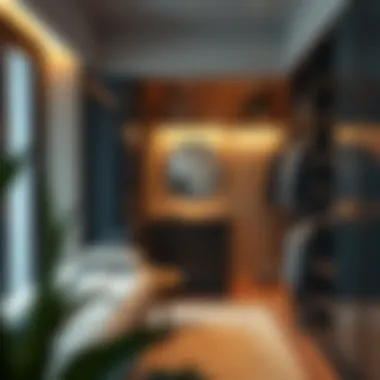
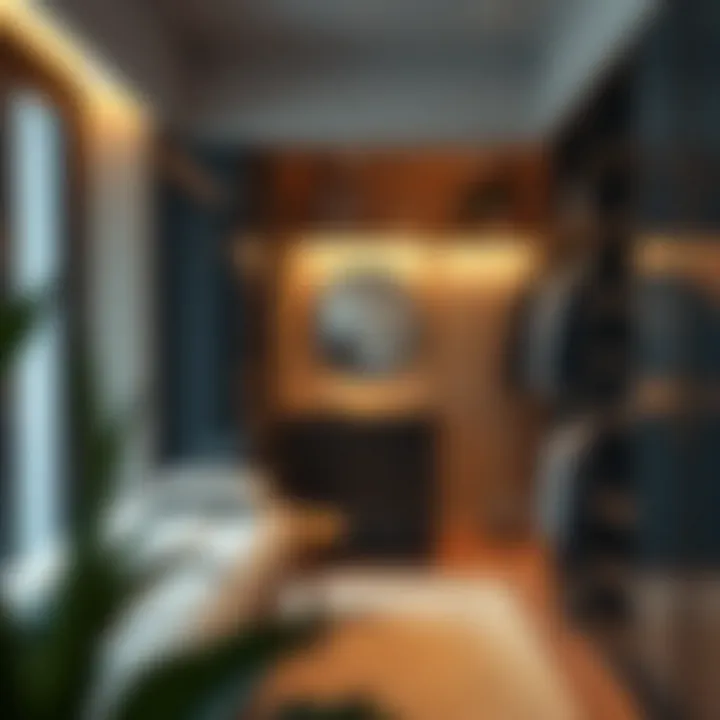
Online resources are more than mere tools; they’re gateways to creativity and innovation in closet design.
These online platforms open up a treasure trove of possibilities for creating a functional yet stylish reach-in closet. Engaging with these resources not only ensures a smoother design process but also leads to end results that reflect personal style and practical needs.
Making the Most of Small Spaces
When it comes to designing reach-in closets, embracing the challenge of limited space is essential. Small spaces often receive a bad rap, suggesting they can’t possibly meet all storage needs. However, with careful planning and imaginative design, these compact areas can become highly functional and stylish. By focusing on maximizing every square inch, you can create a closet that meets your needs while also maintaining a visually appealing environment.
Compact Design Ideas
In small reach-in closets, every detail matters. Here are a few innovative approaches that can help you gain space without sacrificing usability:
- Custom Shelving: Consider installing built-in shelving units that reach towards the ceiling. This optimizes vertical space and keeps smaller items orderly. Adjustable shelves can add further flexibility, allowing you to shift things around as needed.
- Nook Solutions: If your closet has any awkward nooks or crannies, don’t let them go to waste! Use these places for specialized storage solutions like pull-out baskets or compact shoe racks. They may seem insignificant, but every little bit counts.
- Corner Inserts: Corners are often underutilized. L-shaped shelves or rotating corner units can bring otherwise forgotten space into play, effectively rearranging the storage landscape.
Key benefits of compact design:
- Increased Usability: Efficient designs ensure that every item is accessible, making it easier to find what you need.
- Enhanced Aesthetics: A well-organized closet can look visually pleasing, making even the smallest space feel stylish rather than cluttered.
- Optimized Storage: By maximizing available storage, you can eliminate the need for extra furniture or storage solutions outside the closet itself.
Multi-Function Furniture
When small spaces are in question, multi-function furniture emerges as a hero of practicality. This is especially important for reach-in closets where space is limited and options need to serve more than one purpose. Consider the following:
- Ottoman Storage: An ottoman with hidden storage capabilities can double as a seat or a place to rest items while providing extra room for stashing away seldom-used accessories.
- Bench with Drawers: A sleek bench at the closet entrance, with built-in drawers or compartments, functions as seating while also inviting you to keep shoes or out-the-door essentials stowed away.
- Mirror with Storage: Some mirrors now come with behind-the-glass compartments. This provides a place to easily store and access makeup or jewelry while allowing the mirror to serve its primary function.
In summary, designing a small space doesn't have to feel like a constraint. Rather, it can inspire innovative solutions that elegantly blend form and function. With compact design ideas and multi-functional furniture, a little space can go a long way in creating a comfortable and organized reach-in closet.
Construction and Installation
When it comes to designing a reach-in closet, the construction and installation phase is paramount. This step not only determines the closet's usability but also influences the overall aesthetic and functionality of the space. A well-constructed closet can maximize storage, enhance organization, and provide a tailored experience to the user. Neglecting this aspect could lead to feeble structures, wasted space, or unappealing designs.
Pre-Installation Planning
A solid plan lays the groundwork for any successful installation. Planning should involve a comprehensive view of the space, taking into account dimensions, layout, and the items that need storage. It is crucial to measure the height, width, and depth of the area designated for the closet. Based on these dimensions, choose shelving and rod placements that cater to personalized storage needs. Those planning ahead can avoid common pitfalls such as installing shelves too high to reach or overcrowding the space with unnecessary items.
Material Selection
Choosing the right materials is essential in achieving a durable and visually pleasing reach-in closet. Two common options often come into play in closet design are wood and metal.
Wood vs. Metal
Wood has a classic allure, often giving spaces a warm and inviting feel. It is frequently used for shelving and cabinetry because of its strength and aesthetic versatility. Wooden closets allow for customization in terms of finishes and styles, making them a popular choice among homeowners looking for elegance. However, wood can be susceptible to cracking or warping in humid conditions, which can be a disadvantage in certain climates.
Metal, on the other hand, has grown in popularity due to its modern appearance and durability. Often seen in contemporary designs, metal shelving allows for a sleek look while standing up well to wear and tear. It’s non-porous, making it easy to clean and resistant to mold and odors. However, metal tends to feel colder in touch and can be less forgiving as a surface for delicate clothing.
Both materials have unique advantages. The choice really comes down to personal taste and how the closet will be used.
Sustainable Options
Sustainability is becoming a primary consideration in design choices, including closets. Sustainable options encompass eco-friendly materials that minimize environmental impact. Options such as reclaimed wood or certified sustainable wood reduce deforestation impacts and reflect a conscientious approach to design. While they might be pricier upfront, the long-term benefits to the environment and personal satisfaction can outweigh initial costs. More homeowners are actively seeking these materials to align with their values and enhance the ambience of their living spaces.
Utilizing sustainable choices means selecting products with longevity as well—products that won’t end up in a landfill too soon.
DIY vs. Professional Installation
Choosing between a DIY installation and hiring professionals can affect both the timeline and the outcome of your closet design. DIY projects offer a sense of accomplishment and often save on labor costs. However, they require significant planning, patience, and knowledge of construction techniques. Those with a handy background may find this approach rewarding.
On the flip side, professional installation guarantees a polished finish, as experienced installers likely bring expertise and efficiency to the table. They can navigate potential issues that may arise during the installation process—issues that a novice may overlook. Ultimately, the decision should align with your confidence in your skills, your vision for the space, and your budget.
Evaluating Style Trends in Closet Design
Understanding style trends in closet design is crucial for anyone considering a renovation or new build. The closet is not just a utility space; it often becomes a reflection of personal taste and broader design movements. Keeping an eye on these trends can yield both practical benefits and aesthetic satisfaction. By analyzing current styles, homeowners and designers are better placed to create spaces that are not only functional but also align with contemporary preferences.
Evaluating style trends gives insight into how people think about organization, aesthetics, and functionality. Such trends can inform decisions about color, materials, and layouts, ensuring that the closet harmonizes with the rest of the home’s design. Plus, understanding popular trends can help you avoid costly missteps that come from investing in outdated styles.
"Style translates not only into how things look, but how they function within your space."
Minimalist Approaches
Minimalism in closet design emphasizes the philosophy of 'less is more.' This approach prioritizes clean lines, neutral color palettes, and uncluttered spaces. The objective is to create a serene environment that encourages simplicity and ease in daily life.
In practical terms, a minimalist closet design might involve:
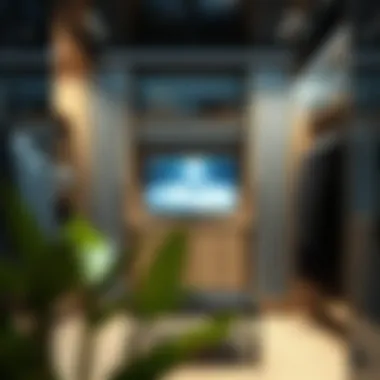
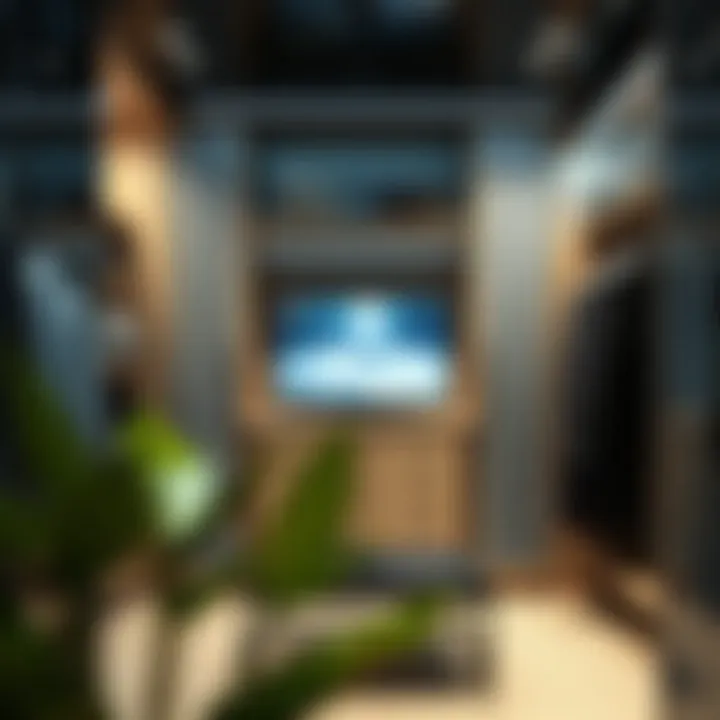
- Straightforward storage solutions: Think open shelves or hanging rods rather than bulky cabinets. This not only helps in easy access but makes it visually tidy.
- Limited color schemes: Shades of white, beige, or gray can communicate calm, allowing clothing and accessories to be the focal point.
For instance, the trend of using natural woods with matte finishes can elevate a minimalist design, providing warmth without overstating itself. Walls might sport a simple, single hue, akin to a canvas, inviting a sense of order and peace. This trend is particularly appealing to those living in urban environments, where the rush of daily life can make serenity an elusive goal.
Maximalist Design
Contrasting sharply with minimalism, maximalist design embraces extravagance and personal expression. In a world where many prefer subdued aesthetics, the swing to maximalism ignites a celebration of color, texture, and form.
Within the closet context, maximalism can look like:
- Bold patterns and colors: Bright wallpapers and colorful cabinetry stand out and express individuality. Layer rich textures, such as velvet or metallics, for added depth.
- Eclectic accessories: Items displayed openly can become decor pieces, showcasing your style and character. This trend invites a curated collection of shoes, bags, and hats into the design, creating a lively dialogue within the space.
Users finding joy in vibrant details might align better with this approach. Maximalism allows you to embrace your unique style, making the closet feel like an extension of your personality rather than merely a storage area.
Integrating Technology
As advancements continue to seep into every aspect of our lives, integrating technology within reach-in closet designs proofs to be a wise investment. Smart solutions can elevate both functionality and convenience.
Examples of tech integration include:
- Automated lights: Motion sensors activate as you enter, ensuring visibility without the fuss of a switch. This small change enhances both usability and safety.
- Smart organization systems: Using apps to track clothes or manage inventory can streamline choices. Some systems even suggest outfits based on what's available, saving time and adding a layer of fun.
Moreover, technology can enhance the overall aesthetic. LED lighting strips may provide not only practicality but also a touch of modern flair. Imagine a soft glow highlighting your favorite items, creating an inviting atmosphere.
User Experience and Navigation
When designing a reach-in closet online, the experience and navigation of the platform can ultimately define how easily users can bring their visions to life. The importance of fostering a seamless user experience cannot be overstated. It serves as the backbone of a project where creativity meets functionality. A well-structured design tool allows homeowners, designers, and DIY enthusiasts to swiftly navigate through options, making the design process not only efficient but also enjoyable.
Importance of User-Friendly Design
User-friendly design is fundamental for several reasons. First, it significantly reduces the learning curve for users. When a platform is intuitive, individuals can dive straight into the creative aspects without wasting precious time figuring out how to operate the tool. This encourages both novice users and seasoned designers to engage fully with the resources available. For example, when a homeowner designs a reach-in closet, an easy-to-navigate interface can encourage them to experiment with layouts and styles, resulting in more personalized solutions.
Moreover, user-friendly design comes with the ability to visualize space effectively. Tools that allow users to drag and drop elements—like shelving, drawers, and hanging spaces—provide a tactile experience that helps them conceptualize their end goal. When users can quickly see how different configurations work, they’re more likely to find solutions that fit their needs while feeling confident in their choices.
Feedback and Iteration
Feedback is the lifeblood of any design platform. Incorporating user feedback into the design improves overall functionality over time. When designers receive constructive criticism and ideas from users, they can iterate on their products, ensuring that what is offered remains relevant and effective. This continuous loop of feedback and adjustment helps keep the platform aligned with current trends and user expectations.
A case in point: many online design tools now feature a community section where users can share their designs, comment on others' work, and provide tips. This sort of interaction not only fosters a sense of community but also opens the door for learning and improvement. If a user suggests a specific accessibility feature that they feel would enhance the experience, designers can take note and work towards implementing those suggestions in the next update.
"User experience is not just about usability; it's about creating an environment that invites creativity while guiding users towards the best solutions for their needs."
As technological advancements continue to evolve, so too will the methods of gathering and using feedback. Future iterations will likely incorporate more automated analytics to gauge user behavior, leading to even smarter design iterations.
Future of Reach-In Closet Design
The realm of closet design is in a state of near constant evolution. Particularly, reach-in closets are seeing a significant transformation, driven by advancements in technology, changing user preferences, and a growing focus on sustainability. Understanding the future of reach-in closet design is essential for homeowners and designers alike, as it not only informs their choices but also enhances the functionality and aesthetics of these vital spaces in a home. By embracing visionary designs and innovative materials, users can create organized, stylish, and efficient storage solutions that accommodate modern living.
Innovations in Material Technology
Material technology has come a long way, offering unique solutions that redefine how we think about storage spaces, especially areach-in closets. No longer restricted to traditional materials, designers are now looking at composites, engineered woods, and even recycled materials that not only provide durability but also aesthetic appeal.
- Engineered Woods: These materials combine wood fibers with other materials for strength and versatility. They are lightweight and can be crafted into various finishes, making them a preferred choice for modern closet designs.
- Smart Glass: Incorporating technology, smart glass can be used in closet doors. This material can change transparency on demand, giving the user both privacy and an elegant appearance.
- Magnetic Wall Panels: These panels allow for easy customization. Users can rearrange their storage solutions, from hooks to shelves, on a magnetic base without tools.
Innovations like these cater to aesthetic preferences while ensuring that reach-in closets are practical and relevant to current lifestyles.
Sustainable Practices
Sustainability is no longer a buzzword; it's a necessity that influences design choices across various industries, including interior design. For reach-in closets, adopting sustainable practices goes beyond merely selecting eco-friendly materials. It encompasses an entire philosophy of conscious consumption and responsible usage.
- Reclaimed Wood: One of the most celebrated sustainable options, reclaimed wood brings character and history into a closet. It speaks to a commitment to environmental responsibility while allowing for stylish design.
- Low-VOC Finishes: Paints and finishes with low volatile organic compounds help improve indoor air quality and reduce harmful emissions. This consideration is particularly vital for spaces where people spend a significant amount of time.
- Energy-Efficient Lighting: Using LED technology in closet lighting reduces energy consumption. LED lights last longer than traditional bulbs and have a much smaller environmental footprint.
"Sustainable practices in closet design don’t just benefit the environment; they also ensure that these spaces remain functional and beautiful for years to come."
The future of reach-in closet design is rooted in innovation and sustainability. For homeowners, designers, and DIY enthusiasts, understanding these trends means making informed decisions that lead to more functional and pleasing spaces. It’s a journey toward marrying style with practicality, ensuring that reach-in closets not only meet current needs but also anticipate future requirements.
End
In wrapping up our comprehensive guide on designing reach-in closets online, it becomes clear that this topic is not merely about aesthetics; it's about creating a space that serves practical benefits while reflecting personal style. The insights shared throughout this article highlight the multifaceted nature of reach-in closet design, marrying function with flair.
Considerations on Space Utilization
Effective space utilization remains a pivotal element discussed. The strategies for vertical storage, layering items, and ensuring accessibility combine to maximize functionality. Homeowners can make better use of available square footage by applying these principles, turning an often-overlooked area into a well-organized storage nook. This is especially essential in smaller homes or apartments, where every inch counts.
Material and Aesthetic Choices
The selection of materials also plays a crucial role. Going beyond wood and metal, designers today are exploring ingenious sustainable options that marry durability with eco-friendliness. By choosing materials that not only last but also align with one’s aesthetic preferences, individuals can curate a closet that truly complements their home.
User Experience and Functionality
The section on user experience underscores that a well-designed reach-in closet isn’t just about looks. It needs to cater to the user’s daily interactions. Simple yet impactful elements like lighting and accessibility features ensure that the space remains functional and user-friendly, enhancing the overall homeowner experience.
"A closet’s design is a reflection of how well we understand our own needs."
Trends and Future Outlook
Emerging trends show a shift towards integrating technology and sustainable practices in closet designs. Homeowners and designers are increasingly looking for solutions that not only enhance their daily life but also contribute positively to the environment. As closet design continues to evolve, keeping an eye on these advancements will provide a competitive edge for DIY enthusiasts and professionals alike.



